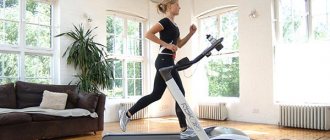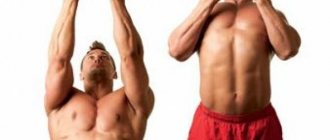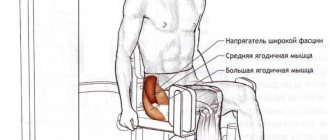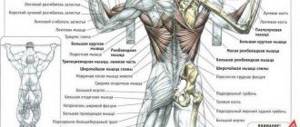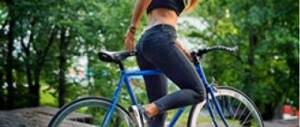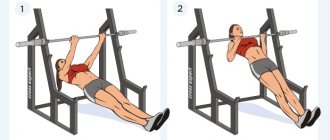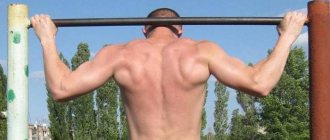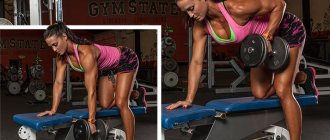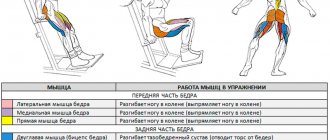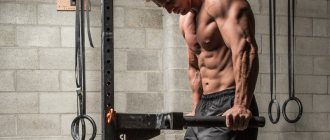Race walking is attracting more and more fans, which is not at all surprising, because this type of training has many advantages. Firstly, it is not as traumatic as other sports, secondly, it is suitable for almost all people and, thirdly, it improves health and gives the body the necessary vitality. Let's find out how much benefit race walking can bring, consider its main pros and cons, and also find out which muscles are pumped.
- Walking Pros
- Minuses
- Fast
The benefits of walking
The beneficial properties of walking are undeniable . According to statistics, people who regularly walk are 30% less susceptible to cardiovascular diseases. They live longer and get sick less.
Walking is the best medicine for a person.
This phrase, uttered by the outstanding Greek physician Hippocrates in ancient times, remains relevant to this day.
What are the benefits of walking? Its properties are extensive:
- Strengthening the bone skeleton.
- Normalization of blood pressure.
- Reducing blood cholesterol levels.
- Muscle toning.
- Strengthening the heart muscle.
- Burning extra calories.
- Acceleration of metabolism.
- Removing toxins and waste.
- Improved coordination of movements.
- Normalization of sleep.
- Strengthening the immune system.
- Rejuvenation of the body.
- Providing vitality and positive mood.
- Increased mental abilities and brain activity.
- General improvement of the body.
Walking increases sexual desire and helps reduce the risk of genital cancer. This is the best remedy for all diseases and ailments, as well as bad mood and extra pounds.
Walking does not require any material costs or special equipment and is accessible to everyone, regardless of age or financial condition. This is a universal and best sport. It does not require any specific physical training and has no contraindications.
Personal opinion
Valentin Smirnitsky, actor:
– It’s not possible to play sports regularly – the frantic pace of work and constant touring make it impossible to do it. I try to walk as much as possible. Of course, I can’t call my walking sports, but for me it’s physical activity. In general, I like to take a walk and exercise, since I spend a lot of time driving. I also have to move a lot during rehearsals and performances. This is my kind of race walking.
Nordic walking
This exercise is basic in the health-improving physical education of most European programs. It helps maintain muscle tone, strengthens the heart and lungs, does not overload the body, and has a beneficial effect on mood. It has practically no contraindications!
Let's list what muscles are trained when walking in the Scandinavian way: muscles of the cervical-brachial region, deltas, pectoral and scapular muscles, abs. At the same time, the load is distributed evenly. The muscles of the legs and buttocks are most actively involved.
This is the best option for working out almost all muscles. The arms move in opposition to the legs, which causes the step to increase and the upper half of the body to work more. When Nordic walking, special poles are used, thanks to which the shoulders also work, as a result, almost 90% of all muscles are used, which allows you to burn much more calories.
Much more muscles work during Nordic walking. It involves active movement with the help of sticks, and this allows you to use the muscles of the arms and shoulders.
There are no contraindications for walking. It can be done at any age. Walking is allowed even for obese people with poor health.
What works during race walking?
More and more often you can find young people taking long walks with special gadgets that count steps, elderly people with walking sticks briskly walking through the park, dog owners happily walking with their pets for several hours. Walking is accessible to everyone and beneficial to everyone.
- There is no need to learn walking. Your body already knows the movements, you just need to monitor the intensity and duration of your walks.
- It's free. People who are not involved in their physical training often explain this by the lack of finances to visit fitness centers. It's amazing how many people drive an hour to the gym and walk on a treadmill. The same time devoted to a walk in the park would bring just as much benefit and preserve a good mood and time spent in traffic jams.
- With such sports exercises, the risk of injury is minimized, since the joints and bones are not overloaded.
- A person can begin walking at any fitness level and weight, since there is no “flight phase” when both feet are off the ground.
How to walk correctly and how many kilometers should you cover daily?
There are basic rules for walking. There are only three of them. Walking should be moderate, regular and you should gradually increase the time and number of kilometers.
When walking, you need to listen to your body and general well-being, choose a moderate pace and the optimal time for walking in the fresh air. It is important to have fun and not overexert yourself, then the benefits of such walks will be colossal.
Regular walking is key. You need to walk every day for 1 hour. This is the minimum that is needed for the overall health of the body. If possible and willing, walking time should be increased to 2–3 hours a day.
Walking at an accelerated pace is an excellent cardio workout that actively burns calories. So, a 15-minute walk burns about 100 calories.
It is recommended to walk 10 thousand steps daily , which is equivalent to 8 kilometers. Not an easy path, but with years of regular walking you will cover this distance with ease.
To measure the distance traveled, you can purchase a special device (pedometer) or install an application on your mobile phone. There are wristwatches with determination of the distance traveled, a heart rate monitor and a calorie burn counter.
Walking Rules
Although walking is the safest sport, however, there are some nuances that, if not followed, can result in injury:
- The gaze should be directed forward and the chin should be parallel to the ground.
- The abs are kept in tension to avoid unnecessary stress on the back.
- When walking, bend your elbows, your arms should be free and relaxed, but you don’t need to swing them too much.
- Your posture must be correct: keep your back straight, do not lean forward or slouch.
- Walk from heel to toe.
- The shoulders, face and neck should be as relaxed as possible.
- Smile, because a good mood prolongs life.
Technique
1. Raise your chin and look straight ahead, and not at your feet, because this will disrupt the straightness of movement and will make it much more difficult to breathe correctly. 2. During exercise, do not slouch, move your elbows calmly, without straining or pressing them to your body. Bend your elbows slightly and press them to your sides. When walking, “help” yourself with your hands, as you usually do when running. The fingers are slightly clenched, and the hands themselves move freely in time with the movement of the legs: simultaneously with the right leg, the left hand is brought forward and vice versa. Such clear and energetic hand work contributes to moving forward and helps to overcome the distance more easily. Do not forget to relax your arms from time to time by shaking them and sharply lowering them down, which will relieve tension from the shoulder girdle.
3. Touch the ground with your heel first and then “roll” onto your toes. Push off with your toes to give momentum to the next step. Steps should be wide.
4. Focus not on speed, but on breathing: 2 steps - take a deep breath through the nose, 2 steps - slowly exhale through the mouth. When walking, breathing should be deep but free (without delays).
What types of walking are there?
Depending on your level of physical fitness and training goals, you need to choose the most suitable type of walking for yourself.
Walking in place
Ideal for beginners and people suffering from severe obesity. The advantage of this type of walking is the ability to perform it even at home, regardless of weather conditions.
Correct walking in place
You need to walk in place, raising your knees high, reaching them to chest level. In this case, you need to breathe as deeply as possible, inhaling air through your nose and releasing it through your mouth. Such walking will serve as excellent preparation for the upcoming loads.
Fast walk
This option is suitable for people with a tight schedule who find it difficult to allocate enough time to exercise at the gym. Walking briskly, at a speed of about 8 km/h, helps speed up your metabolism and keep your body in good shape.
Fast walking on a stepper
You can walk quickly not only in the fresh air, but also in the gym on a treadmill. With this simulator it is very convenient to control the load, speed of movement, and also the inclination. To make your training more effective, you can walk with small dumbbells in your hands, or use special weights.
It is recommended to walk on a treadmill for at least one hour a day. In this case, you need to monitor your heart rate. If it is below the point at which calories begin to be burned, you will need to increase your walking speed or increase the incline.
Nordic walking
Anyone can use this type of walking, regardless of age and health. There are no contraindications to Nordic walking. This method of movement involves the use of special sticks. They cost around 2000 rubles.
Nordic walking technique
Nordic walking is similar to skiing: moving your left leg forward, you need to swing your right hand with a stick, focusing on it, then repeat everything for the other leg and arm. In this case, the back must be kept in a level position, the movements must be uniform. When lowering the foot to the ground, the heel should touch the surface first, and then the toe. You should start with half an hour of exercise a day, gradually increasing the duration of training.
Walking up the stairs
A simple and accessible type of walking, but it has a number of contraindications, since it creates a large load on the skeletal system and joints. It is not recommended to do these exercises for people who have suffered injuries to the lower extremities. In the absence of such damage, it is recommended to walk on the stairs for about 30 minutes a day. Such loads will help improve heart function, strengthen the buttocks, abs, leg muscles, increase lung capacity, and get rid of extra pounds.
Warm-up exercises before walking
Before starting training, you should do a thorough warm-up to warm up your muscles and prepare them for the load. After warming up, fat will be burned much faster. There is no need to go up and down the stairs too intensely. You can determine the optimal pace for yourself with a simple test: if you can speak calmly out loud while walking without shortness of breath, then the pace is appropriate.
Race walking
This type of walking requires almost constant contact of the legs with the ground: lifting one leg from the surface, you need to almost immediately put the second one on the ground. The speed of race walking should be higher than usual - about 10 km/h.
The difference between race walking and regular walking
Tensing your buttocks as you lift your feet off the ground will help increase the effectiveness of your training. At the same time, you need to keep your back straight and not strain it too much.
Another walking option is to walk backwards. Such exercises help strengthen the muscular system of the back and buttocks. To walk in this way, you need to carefully think through the route so as not to trip and get injured during training.
General recommendations
It is important to choose comfortable shoes for race walking.
In order for walking to bring good results and fat to melt as quickly as possible, you must follow certain rules:
- shoes should be comfortable, not loose on the foot and not squeeze it;
- It’s better to walk in parks or in nature – there the air is fresher and filled with oxygen;
- you need to walk about 6 km (10,000 steps) per day;
- You should do brisk walking regularly, preferably every day;
- The ideal time for a walk is in the morning, after a light breakfast;
- It is recommended to drink a glass of water before and immediately after a walk; you are allowed to drink during the workout itself, but in small sips and no more than once every 20 minutes.
Equipment
To practice fartlek you need leather boots or waterproof trainers. The sole of sneakers (sports shoes) must be flexible. Worn out and low-quality sports shoes increase the load on the foot and can even cause injury.
Your clothing should be appropriate for the weather. In rain and wind, you should wear a water-repellent jacket with a hood. Sweatpants are preferable to jeans, which can make you feel cold if they get wet. If it's hot outside, it's better to play sports in shorts and a T-shirt so that sweat evaporates faster from the surface of the body.
How to learn to walk?
You need to acquire this useful habit, and it’s not difficult to do:
- Replace traveling by transport to and from work with walking . This is especially nice during rush hour. Just imagine: your colleagues are traveling in a crowded, dusty bus, late and nervous, in a bad mood. You walk to work or classes on foot, breathing in full lungs of fresh air and enjoying the surrounding nature. Get up early so as not to be late and have a good walk before the work day.
- Avoid using the elevator in favor of taking the stairs . This is a very effective remedy for cellulite and fat deposits on the thighs and buttocks. Women will appreciate it.
- As you know, it takes 21 days to develop a habit, so force yourself to walk regularly for three weeks and this activity will give you pleasure.
- Choose picturesque places for walks , avoiding roadways and dusty highways. Breathing polluted air is unpleasant and harmful, so walk through parks and alleys, choosing quiet streets with green areas.
- Walking shoes should be comfortable and comfortable . It is unlikely that you will want to walk in patent leather shoes with fifteen-centimeter stiletto heels. Such a walk will seem like a living hell to you. Therefore, it is recommended to wear the most comfortable shoes possible. The ideal option would be running shoes.
- Teach all family members to a healthy habit . So that you don’t get bored while walking, involve your husband and children in this activity. Then your walks will not only be healthy, but will also be a wonderful time spent with your family in the fresh air.
- Increase your sexual desire and arousal . Walking in the fresh air contributes to a rush of blood to the pelvic organs in both men and women, therefore restoring sexual desire and initial attraction. Sexual relationships are very important for people's health, so if you lose sexual desire, you should take a walk in the fresh air before going to bed.
Walking up the stairs
It has the same properties as walking, but it fights excess weight more effectively and allows you to gain a slender and appetizing shape. It tones the body, tightens the buttocks, makes the legs slender and beautiful.
If you live in a multi-story building , walk up and down the stairs. Start with small loads, based on how you feel. Breathing should be uniform and calm, heartbeat should be slightly accelerated. If pain appears in the calf muscles and tingling in the right side, training should be stopped.
To increase endurance and develop physical abilities, you need to train regularly. It is optimal to walk up the stairs every other day. The muscles will have time to recover during this time and pain will be minimal.
Regular walking on stairs is as good for your health as walking. This is a universal and best sport available to each of us. You just have to show a little determination and stop using public transport to prolong your life and improve your health.
Menu
You need to eat 1.5-2 hours before training. By the way, during physical activity, muscles mainly consume carbohydrates, which are the most important source of energy. Therefore, before walking, “charge yourself” with carbohydrate foods: it will help you not experience muscle weakness, dizziness, increased sweating and an accelerated heartbeat during exercise. In the morning, if your appetite has not woken up, drink a jar of natural yogurt before training, eat a fruit or vegetable salad. After a workout, don't jump straight into food. The second breakfast can be taken approximately 20 minutes after training, eating a portion of low-fat cottage cheese with raisins (prunes), a piece of boiled meat, or sea fish. You will be provided with the necessary energy by muesli made from corn flakes with natural yoghurt, dishes made from potatoes, vegetables and fruits, and buckwheat porridge with milk.
